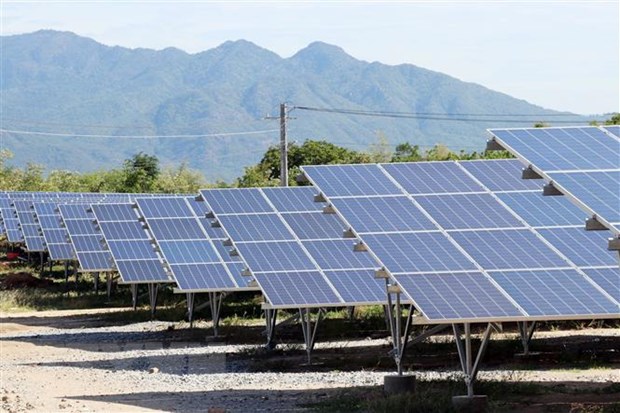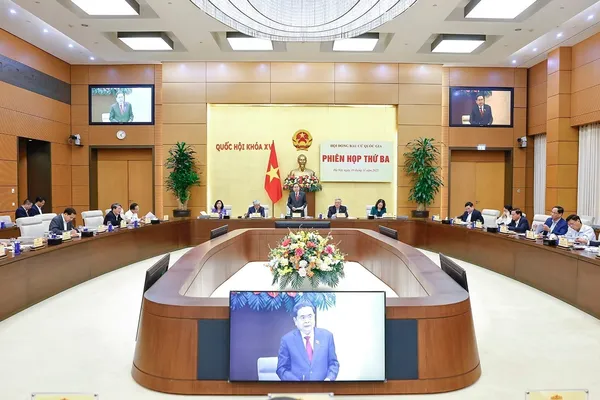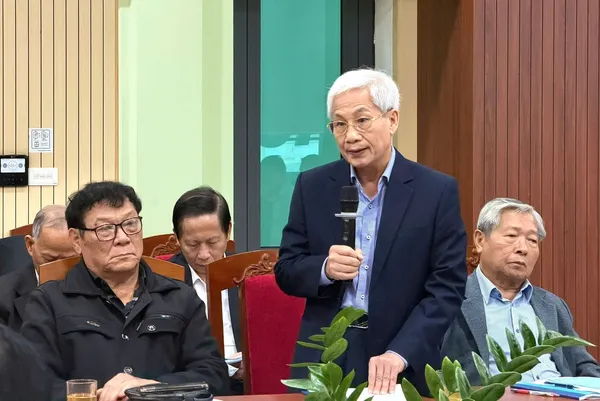 Environment
Environment

The development of wind and solar power has not reached its great potential, especially in the central and southern region, experts have said.

|
| A solar power plant in Ninh Thuận Province. VNA/VNS Photo Công Thử |
HCM CITY— The development of wind and solar power has not reached its great potential, especially in the central and southern region, experts have said.
Speaking at a conference on renewable energy and roof-top solar power held yesterday in HCM City, Deputy Minister of Industry and Trade Hoàng Quốc Vượng cited many barriers that have prevented solar and wind power development.
Infrastructure for the energy transmission grid, for instance, has not kept pace with renewable energy projects.
As a result, several projects in provinces such as Ninh Thuận and Bình Thuận cannot generate 100 per cent of capacity at certain times, Vượng said.
Roof-top solar power also has high initial costs, and while products and services related to roof-top solar power are available, they have no specific technical standards. This has affected the interest of investors in such projects.
Vượng noted that the Government has creaed preferential policies that offer favourable conditions for investors to exploit the potential of renewable energy for sustainable socio-economic development.
The ministry has also set up action programmes, which have been submitted to the Prime Minister for approval, that would be the legal basis for implementation of such projects, Vượng added.
Since the issuance of the governmental Decision on preferential policies for solar power development in April 2017, around 4,500 MW of power has been connected to the grid.
Nearly 500 MW of roof-top solar power and more than 400 MW of wind power systems are operating. And about 3,000 MW of solar power and 2,000 MW of wind power systems are under construction and are expected to be operating by the end of this year.
These solar and wind power systems will reduce pressure on the national electricity system and help set up a renewable energy market in the country, contributing to local socio-economic development, Vượng said.
Võ Quang Lâm, deputy general director of Việt Nam Electricity (EVN), said that energy demand continues to grow. The demand in the 2016-2020 period increased by 0.3 per cent to 11.3 per cent per year. From 2021 to 2030, it is estimated to rise by 8 per cent to 8.5 per cent each year.
According to the Electricity and Renewable Energy Authority, the country will lack 12,690 MW of power by 2023.
A shortage of power could occur in the southern region, with 3.7 billion kWh in 2021, increasing to nearly 10 billion kWh in 2022, and 12 billion kWh in 2023.
According to the Electricity and Renewable Energy Authority, the progress of coal-fired power projects, which have an important role in ensuring energy supply, has been slow. The projects include Long Phú 1 with capacity of 1,200 MW, Sông Hậu II with capacity of 2,000 MW, Long Phú III with capacity of 1,800 MW, and others.
Several other projects such as Long An 1 with capacity of 1,200 MW, Long Phú II with 1,320 MW, and Vũng Áng III with 1,200 MW have been approved but have not been carried out.
Nguyễn Văn Lý, deputy general director of EVN Southern Power Corporation, said that energy for the southern region still depends partly on power transmitted from the north through a 500kW line because power plants in the south lack sufficient supply for growing demand.
The Government should create more preferential policies to attract investment in roof-top solar power, he said.
Lâm noted that there are no regulations that address the loading and placement of solar power panels on roofs. This is another barrier for the implementation of roof-top solar power, he said.
The total power capacity in Việt Nam currently is 55,000 MW. Nearly 4,300 MW of renewable energy is expected to be put into use this year.
According to the amended Power Development Master Plan VII, the capacity of the country’s energy system must reach 90,000 MW by 2025. From 2021 to 2025, the country needs to add 5,000 MW of power each year. VNS




